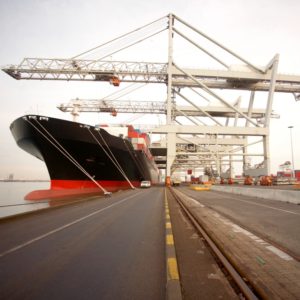
Why Businesses Fail to Deliver On Time In Full for Customers
In my book, On Time In Full: Achieving Perfect Delivery with Lean Thinking in Purchasing, Supply Chain and Production Planning, I explore the reasons why manufacturing and distribution businesses fail to deliver on time. Today I am going to talk about the reasons why so many distribution businesses suffer from poor on-time-in-full delivery performance and excessive inventory.
For someone who spent most of his career in manufacturing, distribution seems a simple business. You purchase things, you stock them and you sell them. However, having worked with dozens of distribution businesses, both large and small, over the past decade, I have discovered that it is not as simple as it may seem!
Of course, there is much work to do in sales and marketing, determining the right customers to target and making those customers aware of your product offering. Then once you have done that and the orders start coming in, the challenge is meeting the needs of those customers on time, in full every time.
Many of the distribution businesses I see suffer from the same problems – frequent stock shortages on key items, while at the same time excessive stock holdings and obsolete stocks. This sounds like a contradiction, high levels of stock and frequent shortages. Businesses have too much of the things they don’t sell and too little of the things they sell. In this blog, I am going to overview some of the root causes of these problems and then in the following monthly blogs, I am going to suggest solutions.
Poor Product Portfolio Management
In a manufacturing business, developing and introducing a new product can be a slow and complex process. Products need to be developed and tested, first production runs scheduled and problems ironed out. In distribution introducing a new product can be much simpler. In fact, it can be as simple as making a phone call and placing and order. This apparent ease of introducing products leads many distributions to rapidly expand their product range. However, every item you add to your inventory increases the inventory you need to hold.
Also adding new products, without a sound product management strategy and a solid business case is likely to lead to a fast-growing “tail” of slow-selling items. Getting the right inventory for these products is particularly difficult as their low volume makes sales unpredictable, so you are faced with a difficult choice between holding stock that may not move or failing to have stock when the customer orders a product that is listed in your catalogue. Therefore, as a first step to developing a “Lean” supply chain you need to have a robust process in place to control your product portfolio and make sure that you only stock the items you sell and make profits on.
Excessively Long Lead Times
Sixteen weeks for furniture, twenty weeks for safety clothing and twenty-six weeks for footwear. These are some of the lead times that distributors have told me they experience, and accept from their overseas (usually Asian) suppliers. None of these products take anything like that long to make. In fact, the manufacturing “value-added time” for most of them is just a few minutes. As well, a review of shipping schedules will reveal that about five weeks is the longest you will ever need to wait for anything to be shipped between any two ports around the world. The reasons for these excessively long lead times are many and varied but include waiting for upstream suppliers to deliver, excessive batch sizes, ordering and scheduling delays and waiting times at ports and cross-docking facilities.
The problem with long lead times is that they multiply every problem in your supply chain. The risk of shortages is increased, safety stock is increased, the cost and difficulty of product change is increased and the ability of your business to respond to changing customer needs is reduced. When you consider the true costs of sourcing from long lead time suppliers you may well find it better to find alternative, suppliers closer to you. Alternatively, you need to redesign your supply chain to achieve better lead times from your suppliers.
Guide to reducing long lead times in the supply chain
Poor Inventory Management
How do you decide how much inventory to keep? If you are a distribution business this needs to be a core competence. There are decades of good research and expertise to call on when working out the right level of inventory. Sadly, too many distribution companies ignore all this and simply rely on gut feel or “blanket rules” such as “four weeks safety stock for everything”. Setting the right level of stock takes an understanding of your level of demand and the level of variation in demand. Based on this information, you can then calculate the appropriate level of inventory for each item.
Long Replenishment Intervals and Large Order Quantities
Putting some science into calculating the right level of inventory is, in itself, not enough to improve performance. The level of inventory you need depends on the level of variation in your supply chain and the lead time from your suppliers as discussed above. However, it also depends on your processes for the replenishment of inventory. This essentially means your purchasing processes. Many distributors lack structured and routine processes to decide when to re-order products and how much to order at a time. It is also often tempting to take up suppliers’ offer of a “special price” for buying a large quantity.
The longer the interval between replenishment and the more you order each time, the larger your inventory will need to be and the greater the chance that you will run out before the next delivery arrives. Routine, frequent replenishment of smaller quantities can lead to dramatic reductions in inventory, fewer shortages and lower costs for expediting stock. Clear rules are also needed to decide when stock needs to be replenished and in what quantity, so that you consistently order the quantity you need and no more.
Poor Warehouse and Distribution Network Management Disciplines
Management of distribution businesses is often focused on the “front end” of the business – sales and marketing. However, to sustain this business the “back end” of your business needs to deliver the level of service you have promised those new accounts you have won. This means the supply chain, as we have discussed, but also means the processes in your warehouse. Warehouses need to be tidy and clean with accurate stock levels of the correct items in each location.
There need to be robust processes for the timely receiving and put-away of incoming stock as well as for the picking packing of dispatch of orders. Order processing and picking processes need to ensure that the exact items required by the customer are picked in the right quantity and dispatched on time.This is a management challenge that requires effective warehouse supervision, good warehouse layout and workflow and tracking of key warehouse metrics such as picking rate and picking accuracy. Many distributors will seek to outsource what they see as an unnecessary hassle bypassing their warehouse and distribution over to a Third Party Logistics (3PL) provider.
This is never as easy as it seems as the 3PL company will need to make a profit, eroding some of your margins. As well as introducing the 3PL adds another link in the communication change creating additional opportunity for confusion, errors and longer order processing lead times. As one of my TXM colleagues says, “Never outsource a problem because you will usually just make it worse”. If Third-Party Logistics makes strategic sense for your business, then by it is worth considering, but not as an alternative to putting in place proper management of your warehouse.
Poor Distribution Network Design and Business Processes
In some distribution networks you may have multiple warehouses or a “hub and spoke” arrangement, where centralized distribution centres service multiple “branch warehouses” or retail stores. The same rules apply to each branch store as apply to the central warehouse. The added complexity is that the distribution of products from the “hub” to the “spokes” needs to be considered. Decisions need to be made about what stock should be held in the hub and which in the spokes. A routine process then needs to be established to replenish the branch stores from the central distribution centre to ensure that the branches always have the stock their customers’ need, but not excess stock.
Summary
This article is designed to pose more questions than answers. It provides an overview of the key issues to consider in your business. TXM are committed to helping any business unlock their full potential with Lean thinking and innovative applications of Operational Excellence.






